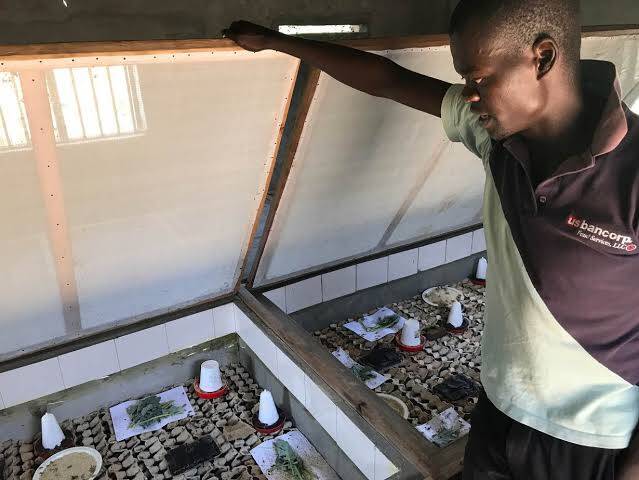Last updated on March 2nd, 2024 at 06:00 pm
So you want to start a cricket farm in Kenya?
Cricket farming is a lucrative business, and there is a big market for crickets as food. In this article, we will discuss the cost of starting a cricket farm, the benefits of cricket farming, the nutrients of cricket meat, how to rear crickets in Kenya, and the market size and opportunities for cricket farming in Kenya.
Benefits and Nutrients of Cricket Farming
When you start cricket farming in Kenya, you stand to benefit in a number of ways. For one, crickets are a good source of protein. In fact, they are sometimes referred to as the “meat of the future.” This is because they contain all the essential amino acids that the body needs to function properly.
Crickets also contain high levels of micronutrients such as zinc, iron, copper and magnesium. This means that they can help boost your overall health and well-being. Additionally, cricket farming in Kenya is a sustainable practice. Crickets require very little water and food, and they can thrive in a wide range of climates.
Read Also
Suitable Areas for Rearing Cricket in Kenya
As for a suitable place you can rear crickets almost anywhere in Kenya. However, some areas are more suitable than others. The ideal areas are those that have plenty of sunshine, are windy and have a low population density.
But:
The coastal region is not ideal, as the humidity and high temperatures can be lethal to crickets. The central highlands are also unsuitable, as the climate is too cold for cricket farming.
How to Rear Crickets in Kenya
When rearing these insects you will need to provide the crickets with a dark and warm place to live. You can do this by constructing a cricket pen. The pen should be made of wood or metal and should be dark in color as seen the above picture. The cricket pen should also be well ventilated.
For food:
The crickets will need food and water. They can eat vegetables, fruits, and grains. They also need water to drink. You can give them water by spraying it on the leaves of the plants in their pen.
Read Also
The crickets will need to be cleaned regularly. This can be done by removing dead crickets and excrement from the pen.
Cost of Starting Cricket Farming
So, what does it cost to start cricket farming in Kenya? Well, the good news is that cricket farming is relatively inexpensive to get up and running.
First of all, depending on the size of your farm and how intensively you want to rear your crickets, you’ll need to buy some equipment. This could include a few plastic trays or boxes, a mesh screen lid for each box, straw or wood shavings for bedding material and water mister or spritzer.
You’ll also need food and feed like wheat bran or broken grain. And finally you’ll need to buy some starter crickets. The cost of this depends on the size of the crickets you’re looking at – from 20cents to $2 per cricket.
Overall although the upfront costs may vary depending on the size of your farm and how intensively you are raising your crickets, generally speaking it won’t cost more than a few hundred dollars to get started with cricket farming in Kenya.
Market Size and Opportunities for Cricket Farming in Kenya
Cricket farming in Kenya is growing in popularity, due to its many economic and environmental benefits. The global edible insects market size was valued at US$ 738 million in 2019 and is projected to reach US$ 1,805 million by 2027, with a CAGR of 10.6%. This shows just how much potential there is for making money out of cricket farming.
Crickets are already being used as ingredients in food products like energy bars and protein powders, so there’s a big demand from the health-conscious sector. In addition, the demand for crickets is rising among pet owners due to their nutritional value, making them an ideal feedstock for pet food manufacturers.
Cricket farming also offers other benefits such as improved soil fertility and better water management due to minimal water use during production and rearing processes. So as you can see, there are plenty of opportunities available when it comes to cricket farming in Kenya.
Pros and Cons of Cricket rearing
Cricket farming in Kenya can be both a rewarding and challenging endeavor. Before you decide to dive into this business, it is important to weigh the pros and cons to make sure that it is a right fit for your goals and capabilities. Here are some of the pros and cons of cricket farming in Kenya:
Pros:
– Cricket farming has immense potential for growth, with many people in Kenya becoming aware of its nutritional value;
– Cricket farming requires small investments and is relatively low maintenance;
– Crickets are easy to farm, as they require very little space, feed, and water;
– The high protein content makes them attractive to farmers looking for alternative sources of income;
– The demand for cricket products continues to grow.
Cons:
– Cricket farming requires dedication and hard work;
– It may be difficult for beginners to get started due to the lack of knowledge about rearing crickets;
– Crickets are vulnerable to diseases if not properly managed;
– The market demand can be unpredictable at times.
It is evident that cricket farming is a lucrative business and has a lot of benefits. The most appropriate time to start a cricket farm is during the short rains starting in October and lasting until December. Suitable areas for cricket farming include the Coastal region, Western region, Central region, Rift Valley and the Eastern region. If you are starting a cricket farm, make sure you rear crickets in a clean and hygienic environment to avoid diseases.
